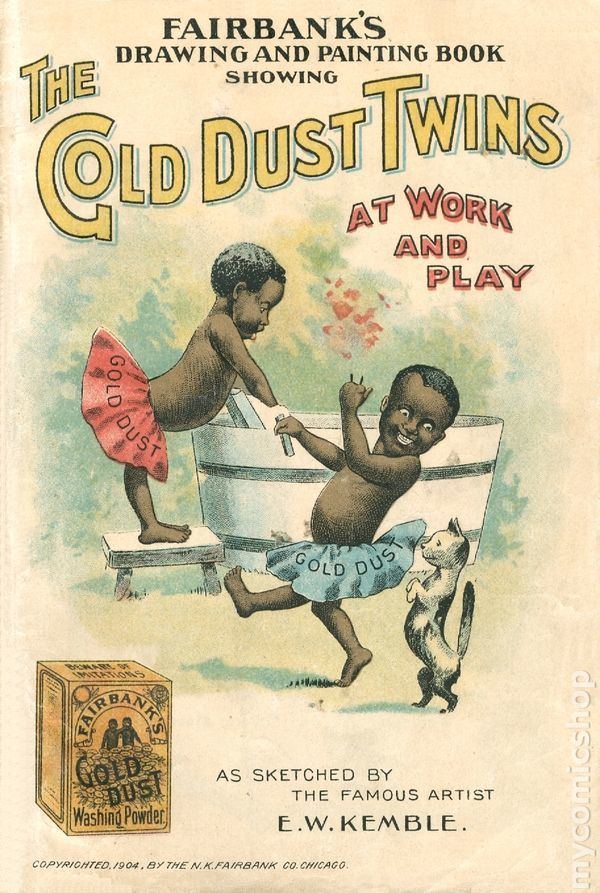 | ||
The Gold Dust Twins, the trademark for Fairbank's Gold Dust Washing Powder products, appeared in printed media as early as 1892. "Goldie" and "Dusty", the original Gold Dust Twins, were often shown doing household chores together. In general use since, the term has had popular use as a nickname on several occasions. The sobriquet, "Gold Dust Twins," is often used to describe two talented individuals working closely together for a common goal, especially in sports.
Contents
- Collins 75a 4 kws 1 receiver transmitter gold dust twins
- Gold Dust Washing Powder
- The original Gold Dust Twins
- Use as a nickname
- References
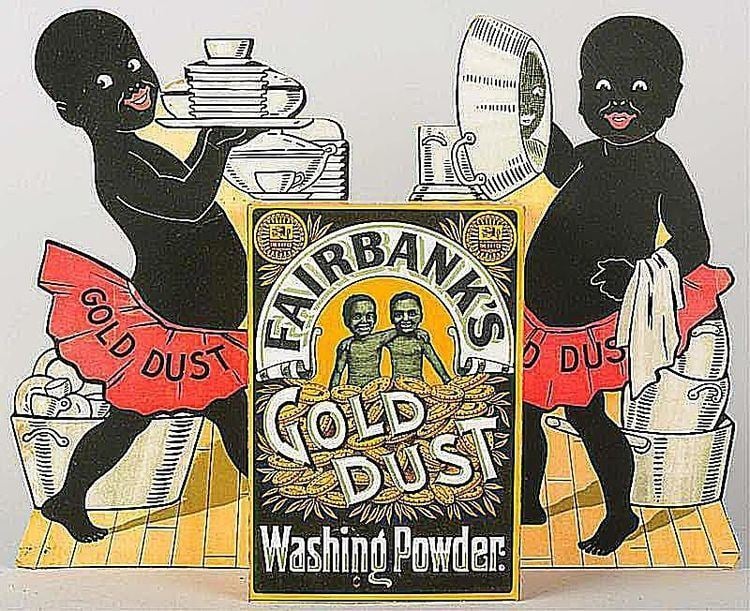
Collins 75a 4 kws 1 receiver transmitter gold dust twins
Gold Dust Washing Powder
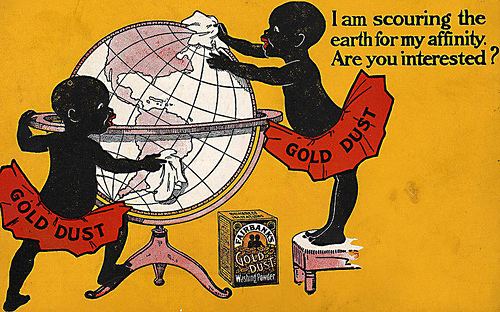
Gold Dust Washing Powder was an all-purpose cleaning agent first introduced in the late 1880s by the Nathaniel Kellogg Fairbank Soap Company based in New York City. Gold Dust was distributed in America by the Lever Brothers Company of Cambridge, Massachusetts. Its first regional success was in the midwestern United States. Gold Dust Washing Powders had been marketed nationally since the mid-1890s, becoming a top-selling national brand by 1903. Gold Dust products were eventually marketed internationally (by Unilever) in Canada and Great Britain. The product lines' bright orange labels all prominently featured the Gold Dust Twins.
The original "Gold Dust Twins"
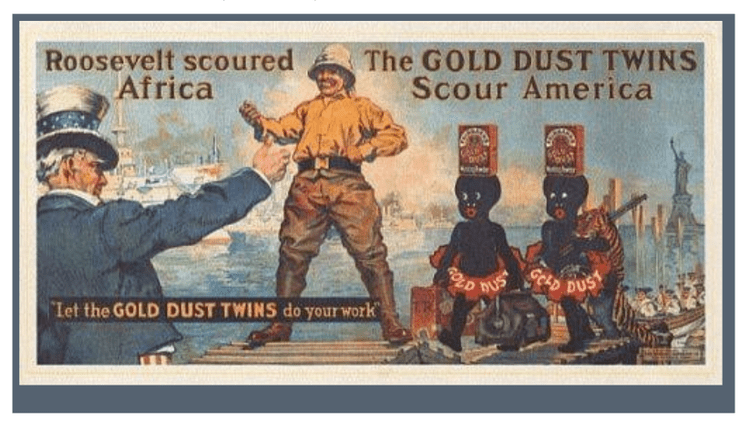
The Gold Dust Twins, 'Goldie' and 'Dustie', were the 'faces' of the Fairbank's Gold Dust Washing product lines. The original (circa 1892) version of the twins was a standard drawing of two young African-American children cleaning up together in a washtub. On the original containers, they are simply pictured standing side-by-side behind a mound of gold coins, under an arch reading "Fairbank's" and over the "Gold Dust Washing Powder" text.
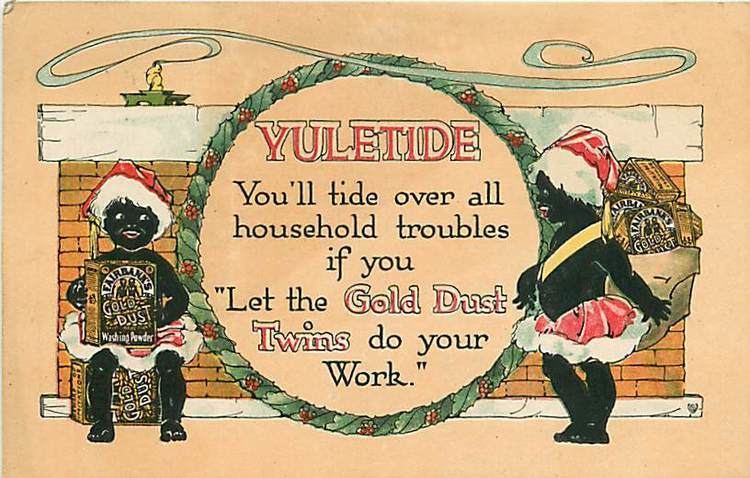
By 1900, the twins had been transformed into a cartoonish pair of caricature, bald, asexual black children shown wearing tutus emblazoned with the words "Gold" and "Dust". On product containers and in advertisements, they were often comically depicted, along with a huge stack of dishes in a washtub, with one twin cleaning, the other drying. The twins became icons following a 1903 national marketing campaign, with the slogan "Let the Twins Do Your Work". They became an easily recognizable trademark found in many, if not most, U.S. homes during the first half of the twentieth century. The Gold Dust Twins were drawn by E.W. Kemble, a staff artist for the Chicago Daily Graphic'.
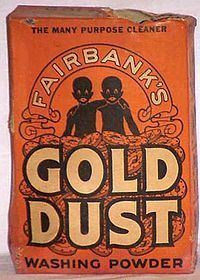
The Twins were featured in print, billboard, specialty advertising and radio advertisements for over sixty years. "The Gold Dust Twins" was the name of a popular radio program which was first broadcast nationally in the US in 1929. Starring Harvey Hindemeyer and Earle Tuckerman as "Goldy" and "Dusty", respectively, the show was sponsored by Lever Brothers and Gold Dust Washing Powder. An early example of product tie-ins, the Gold Dust's advertising jingle became the show's theme song.

The products (along with Goldie and Dustie) were phased out by the mid-1950s, as national sensibilities began to change.
The Twins appear in the 2004 release, C.S.A.: The Confederate States of America, an alternate-reality British documentary about American life after the Confederates had won the American Civil War. A recreation of a "Gold Dust Twins" commercial, featuring purposely outrageous racial stereotypes, is shown as part of the 'mockumentary.'
Use as a nickname
Historically, the "Gold Dust Twins" nickname has been used to describe two individuals working closely together for a common goal, including:
There is a set of ham radio equipment made by the Collins Radio Company in the 1950s that was nicknamed the "Gold Dust Twins". The 75A-4 receiver and KWS-1 transmitter, together, cost over $2500 when new (equivalent to over $20,000 in 2012 dollars). Collins products at the time were considered 'top of the line'. Ham radio enthusiasts call the pair "The Gold Dust Twins," as they had not been affordable to most amateur radio enthusiasts when first introduced.
